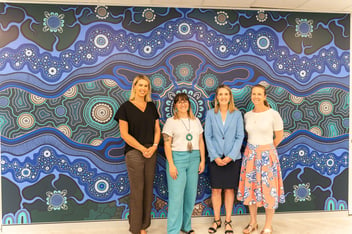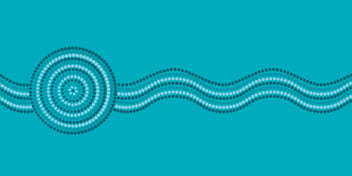Gallery: Water sector RAP artworks
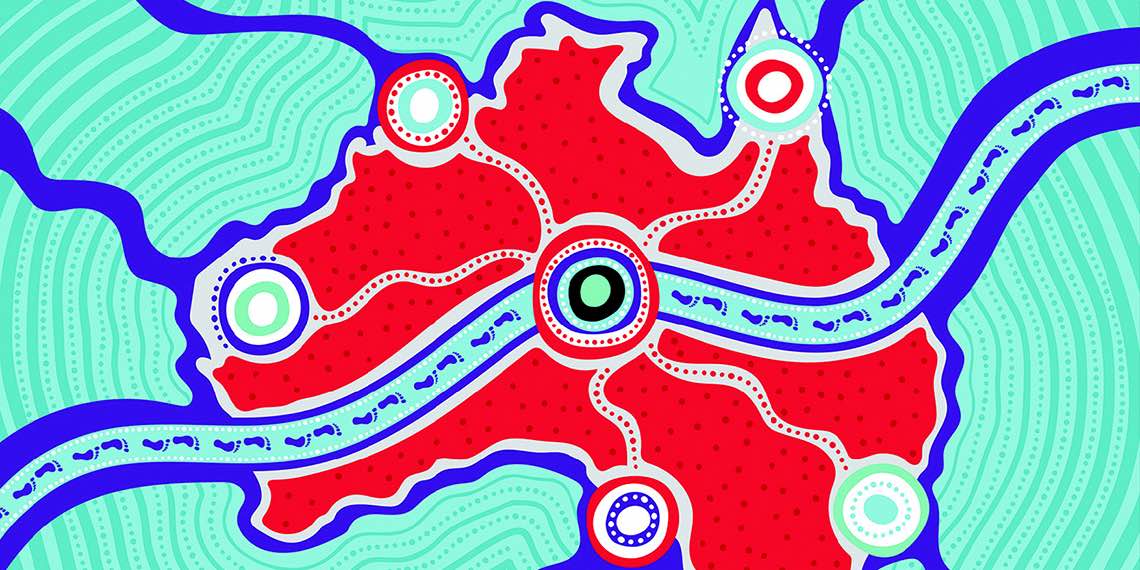
Much of the work — asking, listening, consensus-building — that goes into a Reconciliation Action Plan (RAP) is done out of public view. But the artworks that help bring RAPs to life are anything but.
With an ever-increasing number of organisations in the water community committing to RAPs, more and more RAP artworks are being created and unveiled.
Below is a sampling of recent RAP artworks unveiled by water sector organisations.
Unitywater
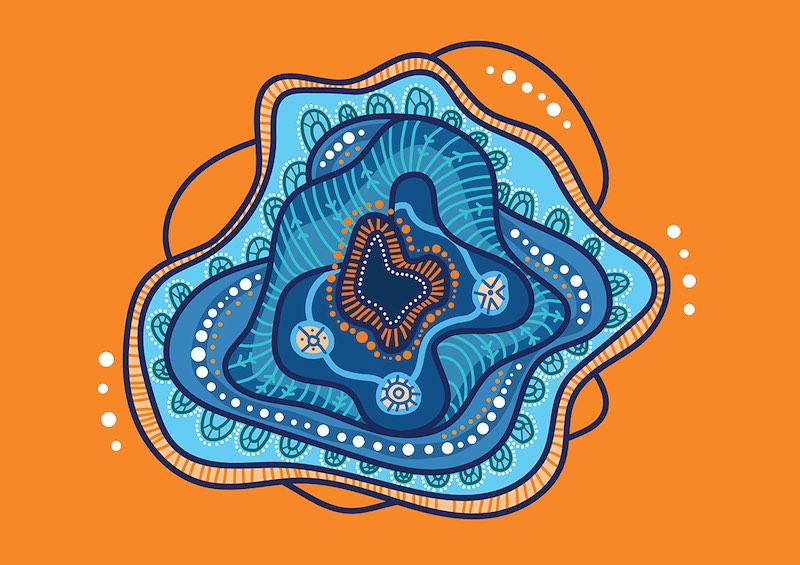
The artwork for Unitywater’s second RAP is entitled Cultural Spring takes the waterhole as a meeting place as its motivation.
Waterholes have long been a gathering point for the exchange of knowledge, and the work shows the connections between land and water, and fresh water and saltwater.
It was created by the Gilimbaa Creative Agency.
Sydney Water
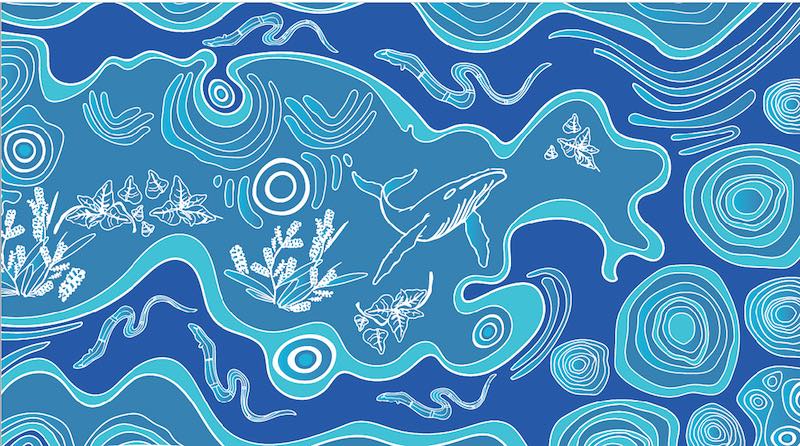
Kamilaroi/Gamilaraay artist Dennis Golding created Sydney Water’s RAP artwork, which he says echoes the topographic patterning of Sydney.
Golding says representing both the fresh and saltwater aspects of Sydney water was a prime focus, and extends to the inclusion of aquatic life such as blue whales and eels, both of which call Sydney’s waters home.
Local native plants such as wattles and warrigal greens are similarly represented, while the circular patterns represent the many watering holes and meeting places of Traditional Owners.
TRILITY
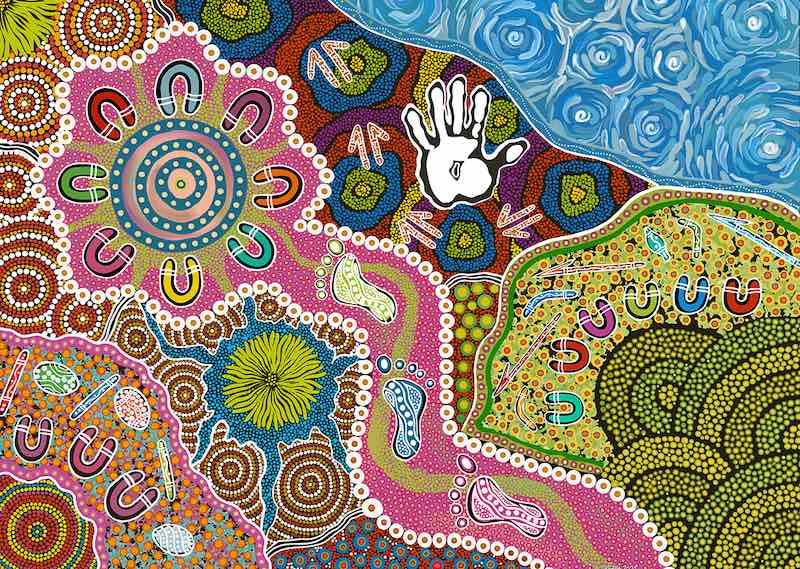
For its RAP, TRILITY worked with Yuggera/Warumungu artist David Booth, who created a richly layered work representing the land, the people and the journey towards reconciliation.
For instance, kangaroo tracks represent moving forward, while the footsteps in the work’s centre, Booth says, represent “everyone coming together, working together and walking together on this new journey into the future.”
Stantec
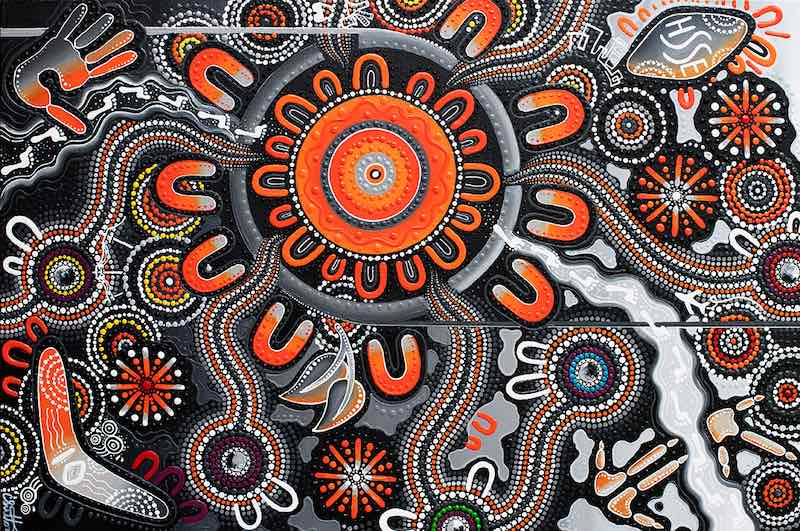
Stantec’s journey has been represented by Kalkadoon artist Chern’ee Sutton.
The piece tells the story of the firm’s growth from a one-man operation in 1954, represented by the handprint, through to its current international status and its work toward reconciliation is seen in the steps towards the kangaroo and emu footprints.
WSP
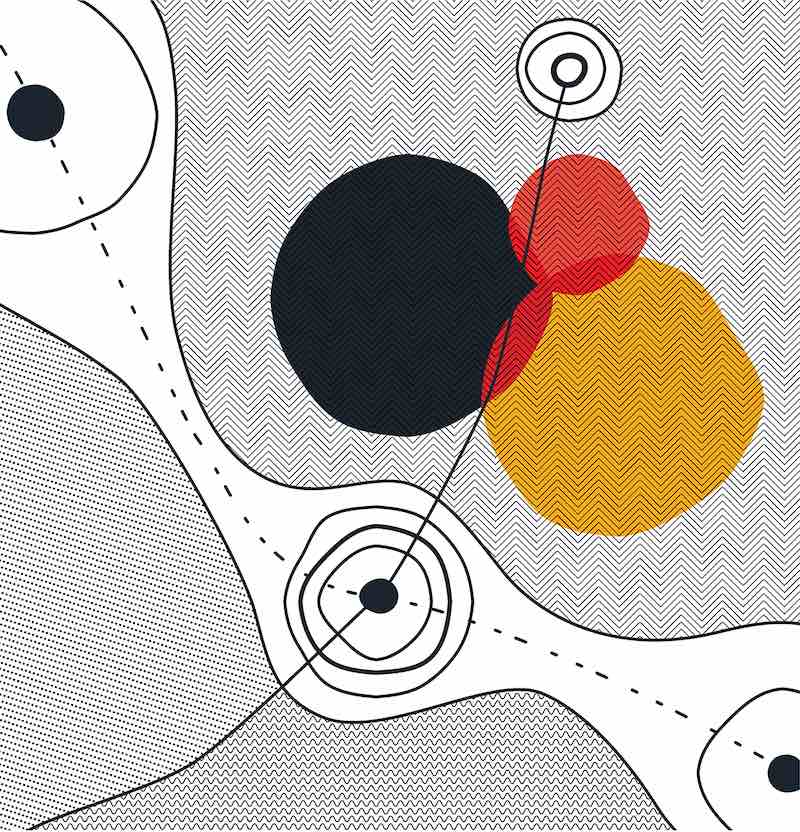
Entitled Songlines, WSP’s RAP artwork that connect artist Michael Hromek’s birthplace, in Bundjalung Country in Byron Bay, to his mother’s Country, Budawang Yuin in southern NSW.
Melbourne Water
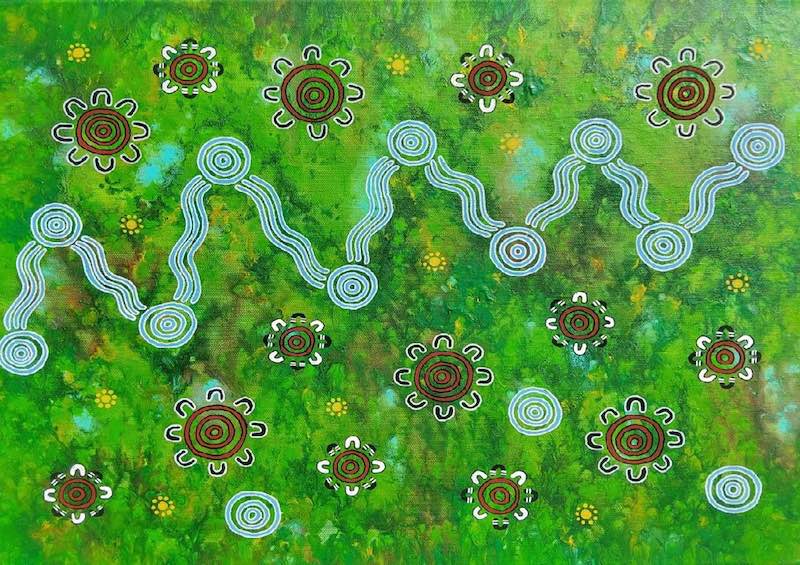
With Naarm Baluk, Kurnai/Wotjobalukby artist Norm Stanley has endeavoured to capture Melbourne Water’s vision.
“The river running through the centre represents our bloodline/heritage. This is our continued cultural, social and spiritual connection to all lands and waters, and our inherent responsibility to care for and protect them over thousands of generations,” he said.
Eight campfires can be seen, representing the five major catchments and three major coastal waters, each with Aboriginal and non-Aboriginal people sitting around them.
SMEC
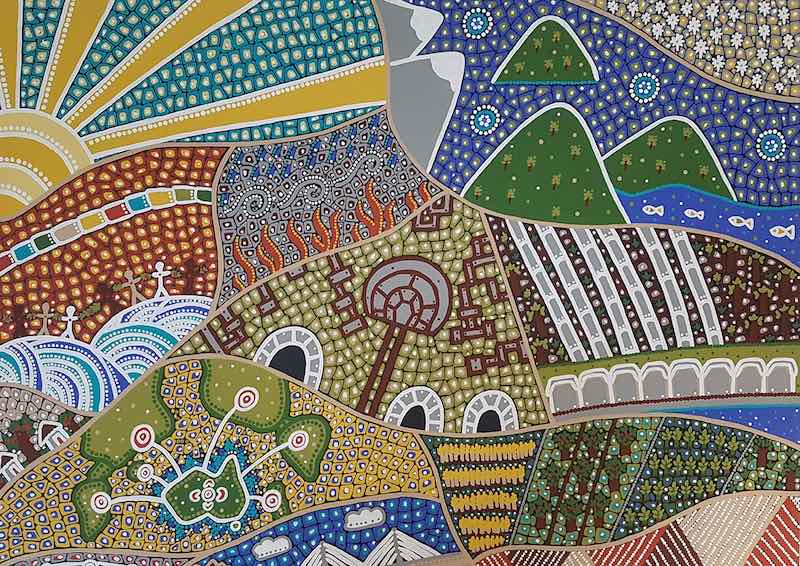
New Dawn, created by Wiradjuri artist Narelle Urquhart, takes a richly representational approach to SMEC’s history, showing, among other things, the contribution the Snowy Mountains Scheme has made to Australia.
For instance, there is a star for each of the project’s 25 years in construction, along with representation of the immigrants who came to work on the project, along with the harsh conditions they endured.
John Holland
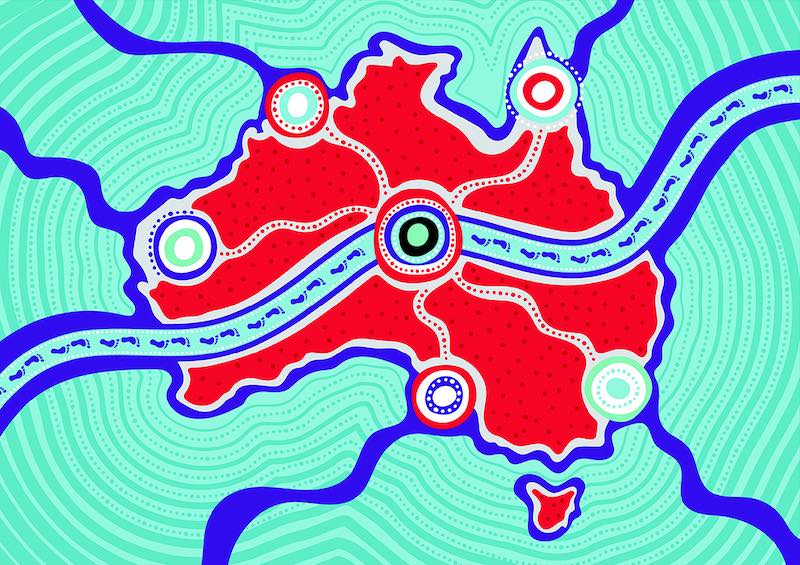
Ngarrindjeri artist Jordan Lovegrove work for John Holland shows the firm in the centre of Australia, reaching out to build networks with different communities.
Aurecon
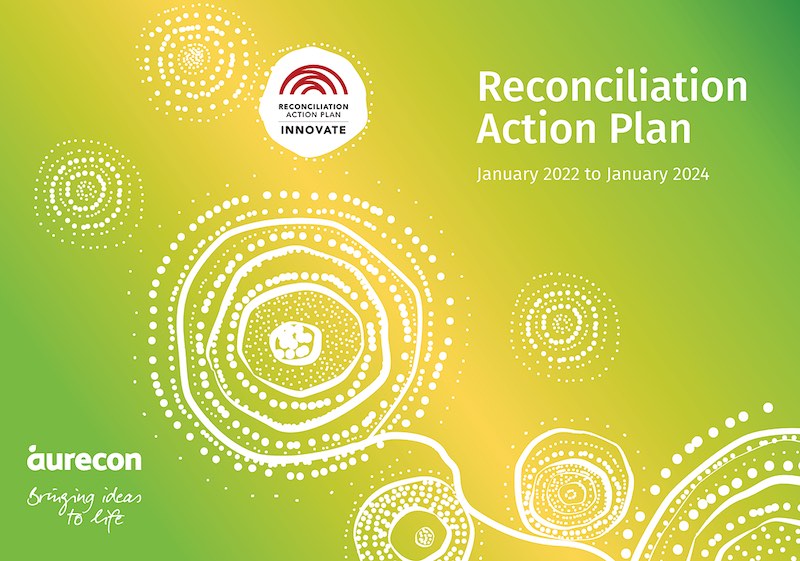
For its third RAP, Aurecon enlisted the talents of artist Shanan Costello.
Ventia
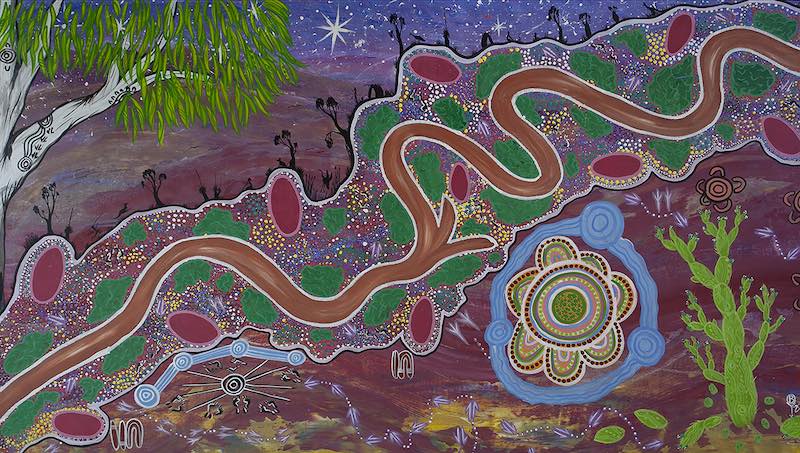
Mithaka artist Anthony Turnbull partnered with students from Chinchilla State High School to create Chinchilla on Charlies.
The work shows Charlies Creek passing Chinchilla, with white gums and prickly pears dotting the landscape that the Barunggam People called home.
GHD
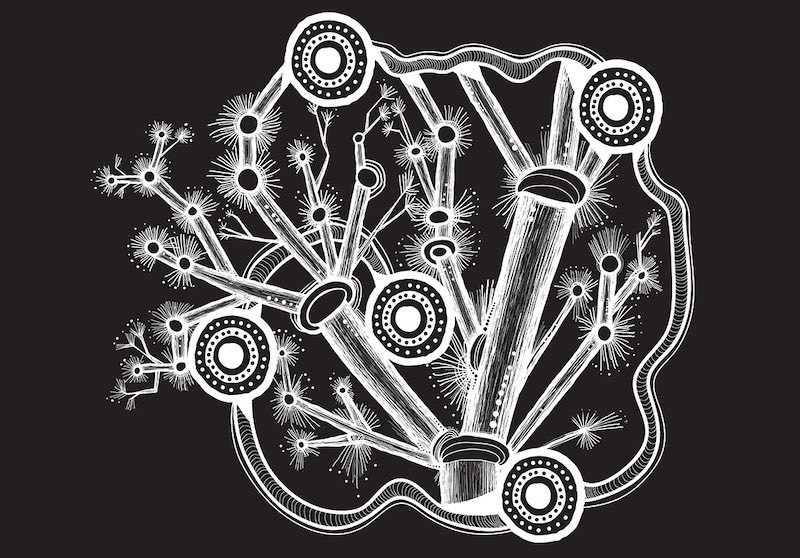
GHD partnered with Noongar artist Tyrown Waigana for the third time for Network Tree, representing the growth of the networks of Aboriginal and Torres Strait Islander Peoples with GHD.
SUEZ
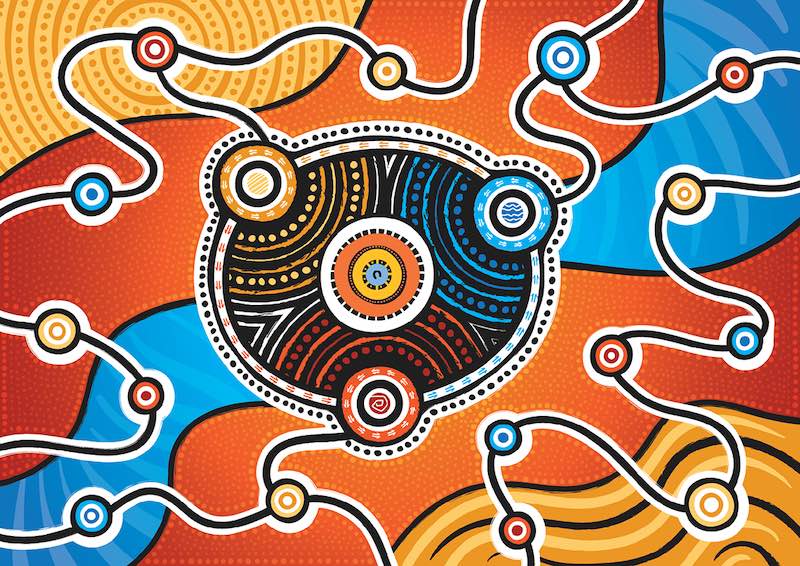
SUEZ also worked with artist Jordan Lovegrove to create this RAP artwork, which aims to encapsulate the firm’s commitment to preserving nature’s natural capital in earth, water, and air.
The interwoven nature of these domains is captured by the twisting lines connecting them all, while the four layers of the central meeting place represent SUEZ’s four main values.
Veolia
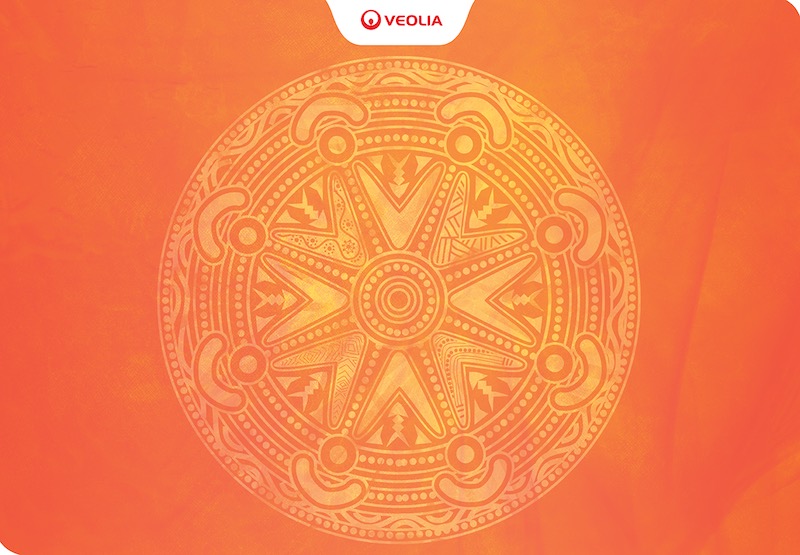
Gilimbaa Creative Agency created Veolia’s reconciliation symbol. Within the concentric circles of the symbol, the four patterned boomerangs represent Veolia’s efforts toward sustainability with the community, the marketplace, the workplace and the environment.
The eight small circles with U-shaped motifs represent yarning circles, one for each state and territory the organisation operates in. These yarning circles represent a space for dialogue between Aboriginal and non-Aboriginal people.

